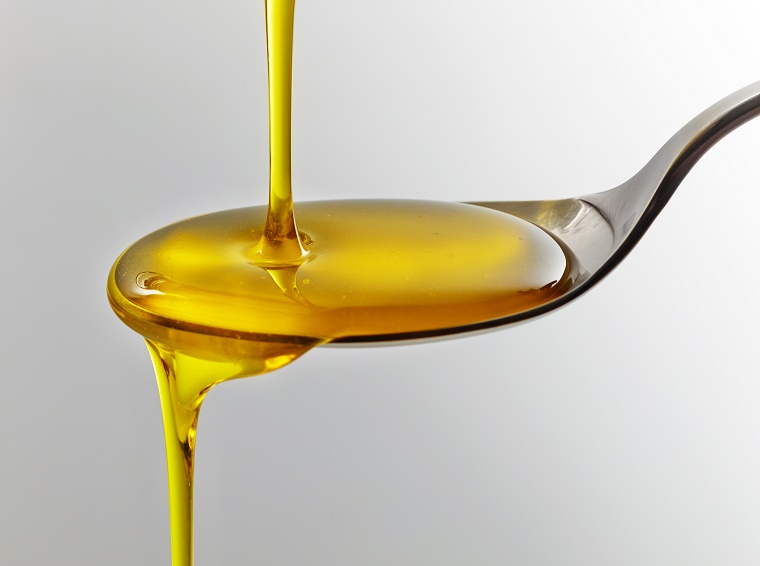The State of Matter Matters: How Does Consumption of Solid Versus Liquid Fats Affect Appetite?
By Jessi Nelson
5 May 2021

Every day, we consume fats in some form or another. But do you know what happens once those fats enter your stomach? And does it make a difference if they are a solid or liquid at body temperature?
Fats play an essential role in a healthy diet, and they help enhance the taste and texture of many of the foods we eat. Because they are an energy source, excess consumption of fats can have a negative impact on weight, post-meal metabolic activity, and disease risk. However, fats can also act as food intake mediators, reducing how much food we eat overall.
What exactly does this mean? Emerging research shows that fats can influence how “full” we feel after a meal, although this effect can vary depending on the nature of the fat.
Most research up to this point has compared the size of the fat molecules (chain-length) or their degree of saturation (how many hydrogen atoms are attached). However, upon entering our bodies, whether or not a fat remains in a solid or liquid state is linked to both chain-length and degree of saturation. This has limited our understanding of how the solid or liquid state of a fat alone contributes to making us feel full after a meal.
Researchers in the Department of Human Health and Nutritional Sciences sought to determine how our body responds to fats in solid versus liquid states.
“We wanted to focus on the physical state of fat, rather than the type of fat, because it allowed us to eliminate other variables, such as chain-length and degree of saturation,” says Dr. Samar Hamad, a recent PhD graduate who conducted the research with Dr. Amanda Wright, a professor of food and nutritional sciences.
The team recruited 15 healthy male participants who attended two 6-hour visits to the Human Nutraceutical Research Unit. During each visit, participants consumed a milkshake-like beverage that had either liquid palm stearin (a type of fat) droplets or solid-crystalline palm stearin droplets.
Prior to drinking their milkshake, participants completed a baseline questionnaire about their feelings of fullness and hunger. They then rated their feelings again every 30 minutes after consumption. Blood samples were also drawn prior to consumption, and at multiple timepoints over the 6 hour visit, to allow the researchers to monitor changes in hormone levels associated with fullness and stomach emptying, two responses our body has after a meal.
Participants did not know which treatment they were getting (liquid or crystalline-solid), nor did the coordinator who gave them their beverages. This type of “blind test” prevented any bias in the results.
What did the researchers find? Participants who consumed the liquid palm stearin milkshake felt over 350 percent more full, and had an appetite score over 100 percent lower when compared to participants who consumed the solid-crystalline treatment.
Hamad was surprised at the size of the difference. “We did expect to see some differences in satiety (fullness, hunger, appetite) across the treatments, but not to this extent, given that the participants consumed the exact same type of fat but tempered to either be in the solid or liquid state at body temperature.”
Blood samples showed that the hormones that signal fullness were also higher in individuals who consumed liquid fats.
“Liquid fats empty from the stomach more gradually than solid fats, allowing for the body to respond by releasing the appropriate hormones to regulate satiety,” explains Hamad.
Hamad cautions that the results do not represent dietary advice, and people should not begin consuming liquid fats to feel full longer. Instead, the study provides foundational evidence for dieticians and manufacturers of appetite suppressants that the state of fat matters.
“It’s important to know how fats behave in the stomach, and how physical state [liquid or solid] contributes, not only to differences in our stomach, but also digestion and absorption of fats,” says Hamad.
There is also a broader application for health care providers and researchers, alike.
“These findings can help clarify how different fats and oils might contribute to health and disease risk,” says Wright, noting that the results will be significant to a broad range of future studies. For example, how do the physical properties of food elicit different metabolic responses? How do they affect our body’s ability to access energy from foods? And how do they influence the risk of cardiovascular disease?
While many questions remain, one thing is now certain: it is not just what we eat that matters, but also the state of the matter.
Read the full story in the Journal of Nutrition.
Read about our other CBS Research Highlights.